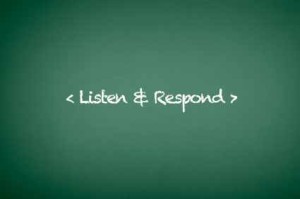How many people do you encounter in a regular day? Do you meet the same people every day, or does it vary greatly?
I know that I have hundreds of interactions every day and they are rarely the same even it is with some of the same small group of people. I understand people’s desire for these conversations and situations to have some commonality, but they rarely do. The differences may be significant or they be just a slight nuance that adds something new to the mix.
This constant variety is often a challenge and source of frustration for HR pros. We want to take some time to breathe or synthesize one interaction when another one happens on top of what we were just responding to. Since this is the reality of human resources and not the exception, we need to have a method that better prepares us to work through situations instead of facing a constant start/stop pace every day.
I have found that the longer I practice HR that deconstructing works for me far more often than creating something bright, shiny and new. So, I’d like to introduce how I handle the beautiful myriad of interactions I encounter. This is what I do . . .
Listen. Respond. Repeat.
 They are three simple words, but in order for you to be consistent in taking this approach, you need to address some things that are in our way. I was talking with a great friend this week and he was sharing the challenge of the perceived motivations we think people have. We do our best to guess what will drive and engage people and this lends us to making assumptions about them without talking to them. Having this approach leads to more misses than hits. It’s true that you can “know” your people, but the circumstances of life are constantly moving. Therefore, people exist on a continuum and not in set places.
They are three simple words, but in order for you to be consistent in taking this approach, you need to address some things that are in our way. I was talking with a great friend this week and he was sharing the challenge of the perceived motivations we think people have. We do our best to guess what will drive and engage people and this lends us to making assumptions about them without talking to them. Having this approach leads to more misses than hits. It’s true that you can “know” your people, but the circumstances of life are constantly moving. Therefore, people exist on a continuum and not in set places.
If you use listen, respond, repeat as your approach going in to interactions, you will eliminate those assumptions you may have because other’s are sharing first. Please note that this suggestion isn’t listen (sort of) and then come up with a solution while people are still talking !! I say this because we are so consumed with getting things done and moving on that we see our time as being wasted by the interactions we have.
If you think interacting with people is a waste of your time, then you may want to get another career.
Trust me. If you follow this approach, your employees won’t know how to react initially because it’s not what they’re used to from anybody. Most managers and supervisors also have perceptions that try to keep their employees in boxes versus taking the time to get to know them. Wouldn’t it be refreshing to see your employees surprised by you? It is very cool to see how they respond.
This coming week I hope you try this simplified way of practicing HR. Remember the first two steps work when you use the third. Take the time for your people and repeat it over and over. You’ll soon see that you take each encounter with people as something you’ll enjoy !!
